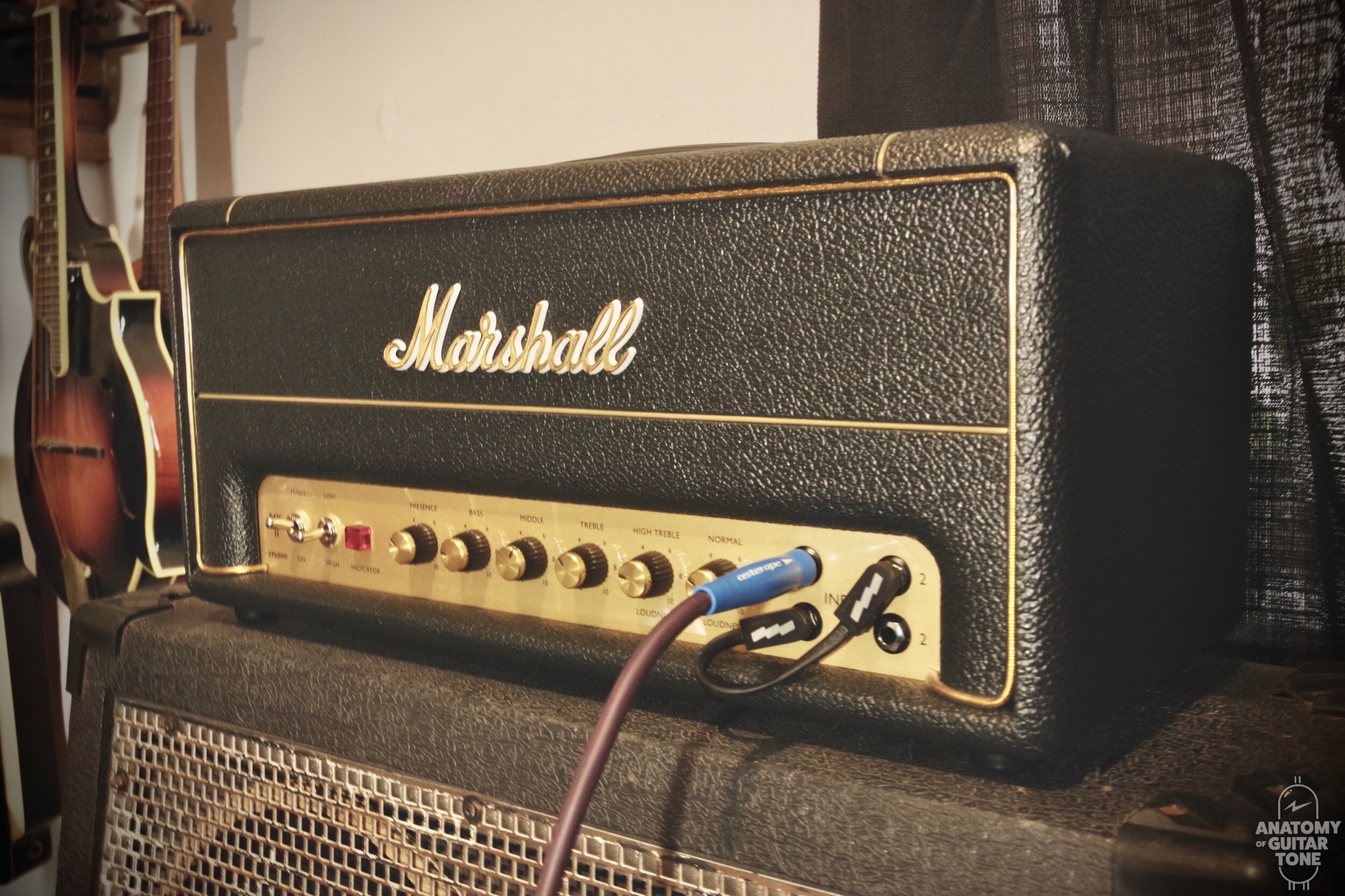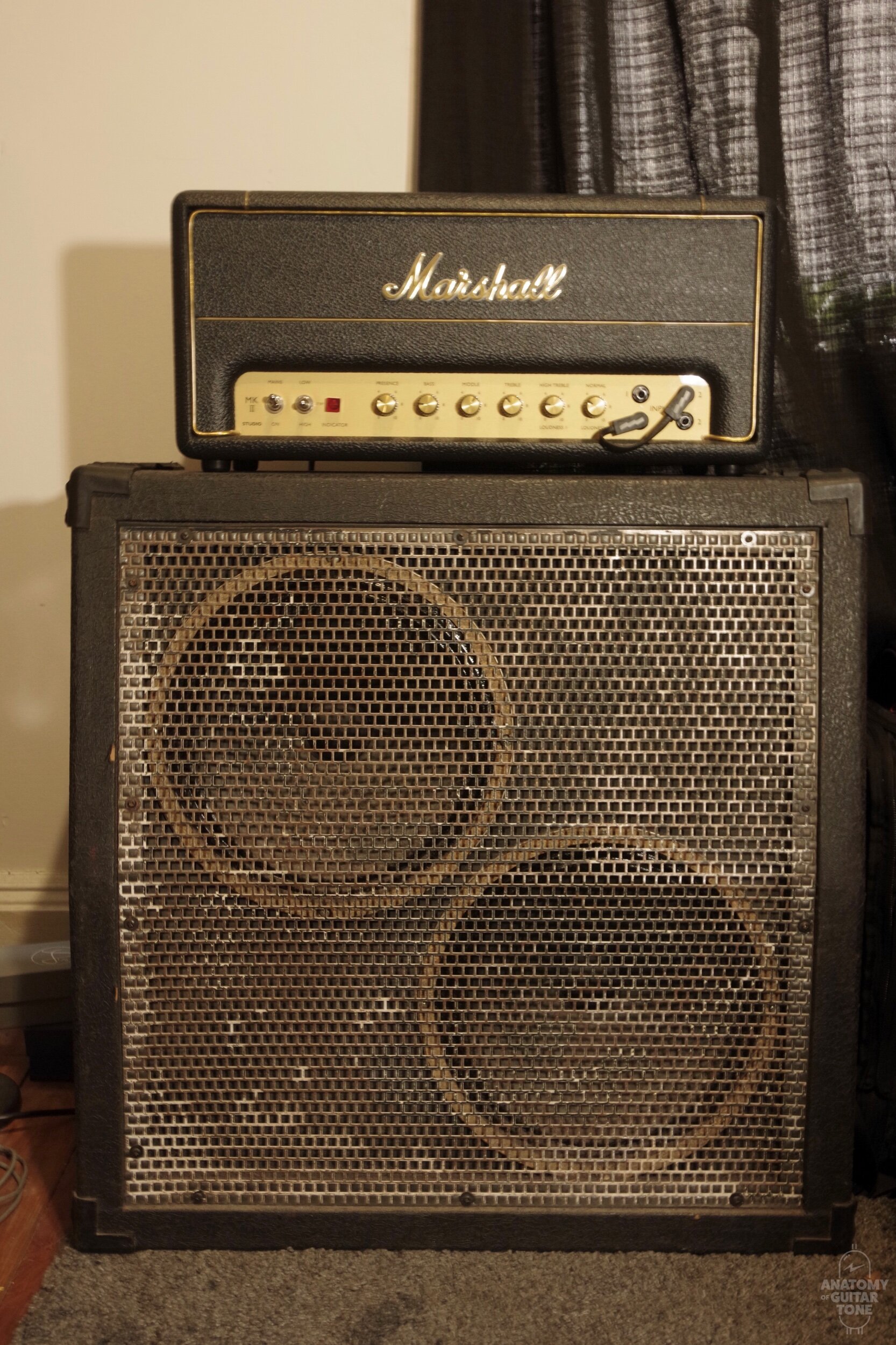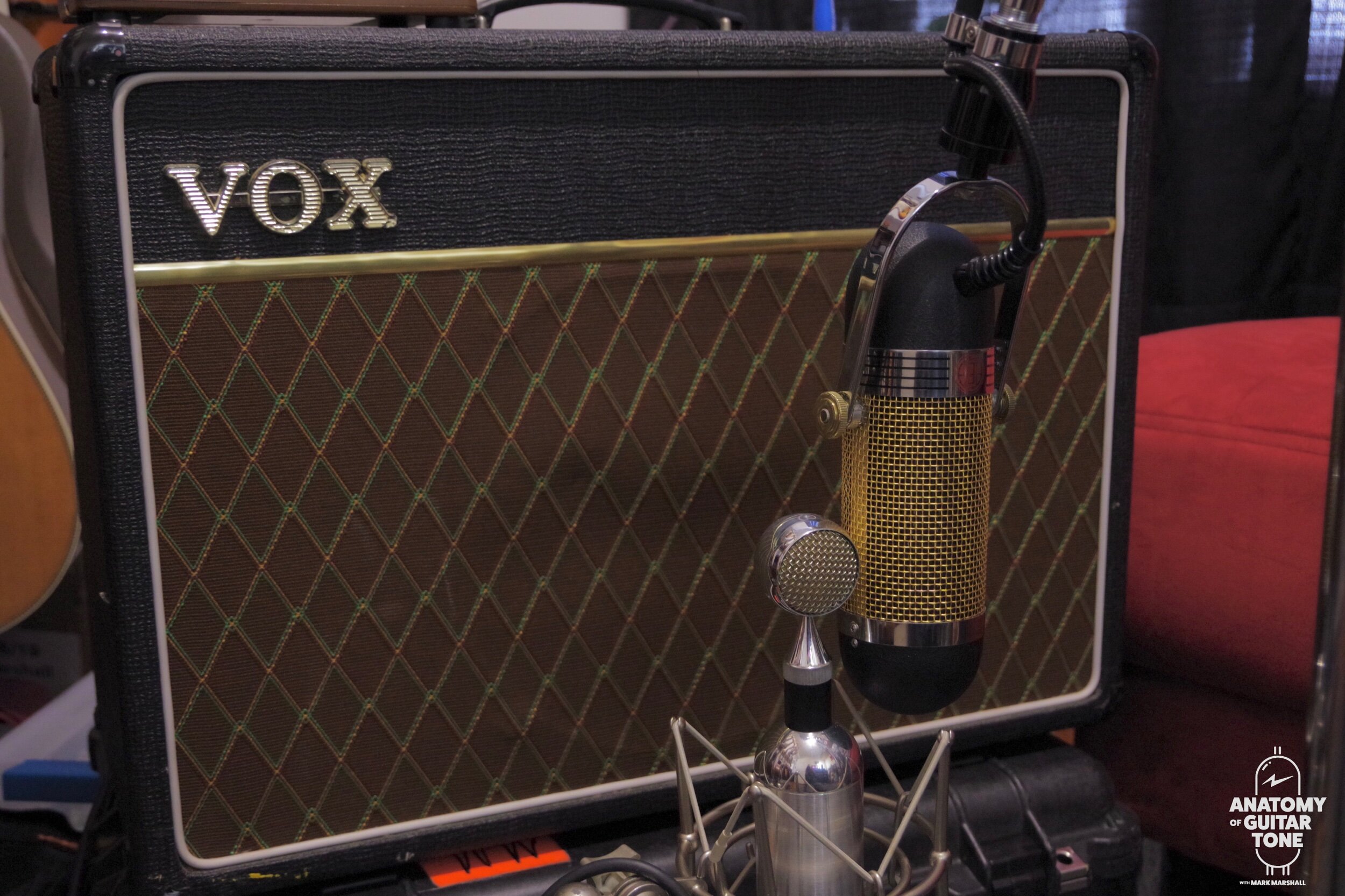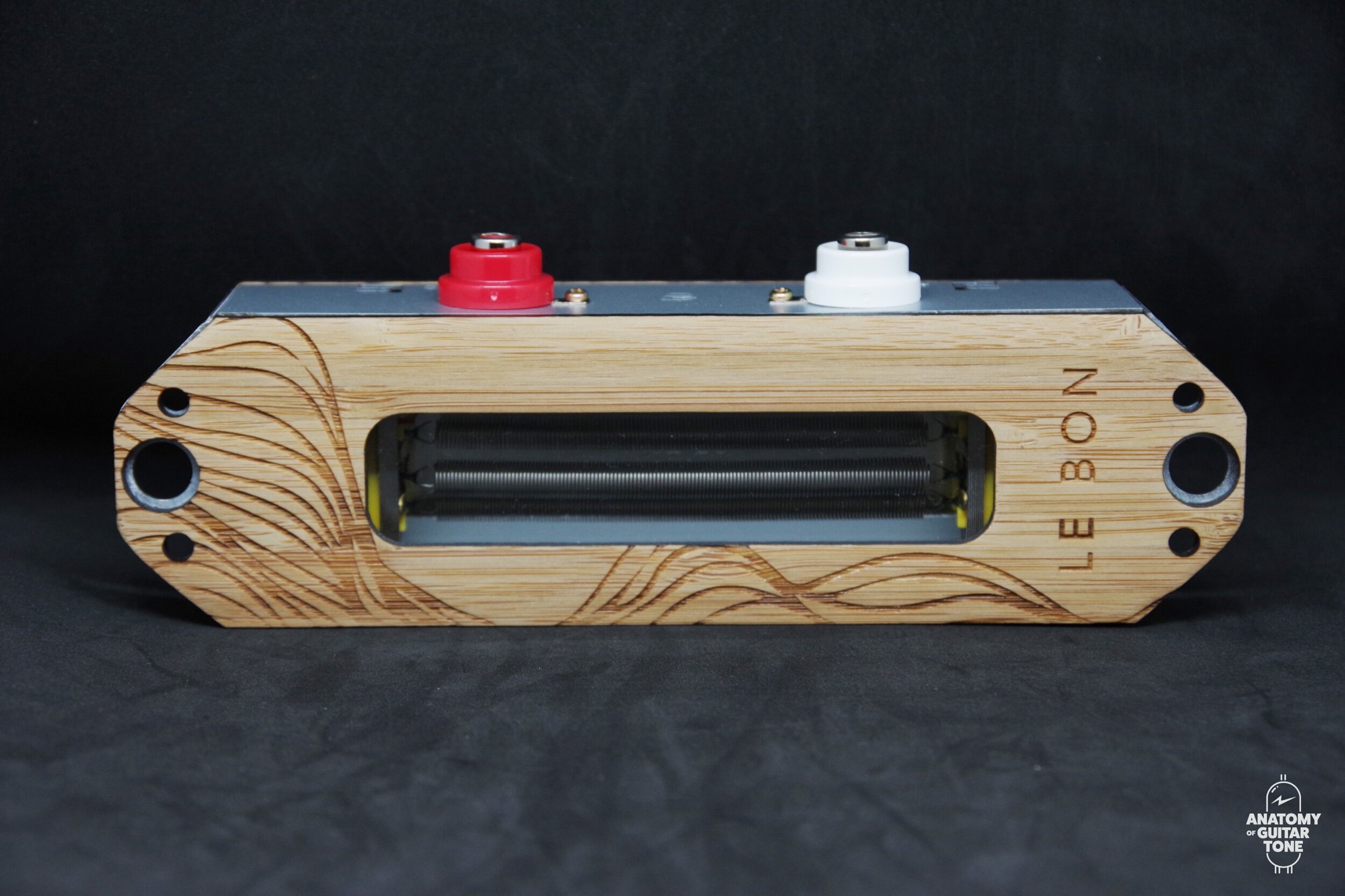Headstrong Lil’ King Reverb
The Fender Blackface Princeton guitar amp tone is about as classic as it gets. The identity of that era of amps might be the most identifiable guitar amp ever. They've been on countless records starting from 1964 on that Feature the Fender Blackface tone.
Buying an original mid to late 60's blackface Princeton isn't only expensive but potentially problematic. I love vintage guitar amps, but they can be unreliable. Right now, a 1964 Princeton is a 46-year-old amp. That's long past the life expectancy of many of the components.
You could get lucky and buy one with no issues. More than likely, though, you will need to maintain and baby a vintage amp more than a new one.
An Estimation
The issue with new Fender amps is many experienced payers complain they don't sound as good. In most cases, they're right. The modern amps that Fender is releasing with the Princeton name on it aren't 100% accurate to the 60's design.
Fender 1968 Reissue Princeton Reverb
Sure, they may have '64 or '68 reissue written on them. However, don't be fooled by branding. The guts are not 100% the same.
Fortunately, for us tone snobs, there is a current small builder that is true to the original design of the 1964 Blackface Princeton.
Headstrong amps were the first to start authentically recreating the Blackface Princeton circuit. Wayne was the first to get the chassis back into production. The same chassis used by other builders making the Blackface circuit.
Wayne Jones (the one-person operation at Headstrong amps) is loyal to Leo Fenders Blackface design. Warts and all. His goal was to reproduce the classic Fender sound with modern, reliable components.
Well, he did it! I have a Headstrong Lil' King Reverb, and it nails the Blackface Princeton! It's crazy good!
The Find
I first discovered Headstrong at a rehearsal studio in Manhattan. I haven't heard of them before. I was blown away with the Lil' King they had. Every rehearsal, I would request the Headstrong. I even called in advance! I was enamored.
I knew I had to have one. I ordered a Lil' King with only one change. I wanted a 12” speaker instead of the standard 10," which usually comes in a Princeton. I'm not the biggest fan of 10" s. Plus, I wanted the extra projection a 12" would allow.
Otherwise, this amp is what would have been a stock 1964.
The CBS Years
If you're around guitar nerds enough, you will hear chatter about how Princeton's were one of the last circuits to get changed when CBS bought Fender.
There is only partial truth to this. Although the circuit may have stayed the same through the late '60s, the cabinets did not.
A 1967 Princeton doesn't use the same floating plywood baffle as the 1964 model. CBS switched to floating particle board at first. Then to particle boards, cabs with a fixed baffle.
A 1964 Fender Princeton also had a solid pine jointed cab. Cabinets are an area of guitar amps that doesn't get enough discussion. I hear a lot of chatter about tubes, transformers, rectifiers, speakers. But not so much about guitar cabs.
Guitar cabs are a crucial part of the sound. Those 1964 cabs are so resonant. Think of them as being the body of the acoustic guitar. A particle board cabinet won't resonate nearly as much as a solid wood finger jointed cab.
Wayne at Headstrong appreciates this. The Lil' King uses the same cabinet construction as the 1964 Leo Fender era Princeton.
I've had many guitarists comment on my Lil' King. They've played other modern Blackface era designs and are stumped why this one sounds better. If we look under the hood, it becomes apparent.
Un-Biased Opinion
When I needed my power tubes changed and biased, I took my Lil King to a renowned amp tech in NYC. He's generally seen it all and not impressed often. However, upon picking up my Lil' King, he commented on how well it was built and sounded.
He commented there were no cost-saving components in it. Wayne didn't cut any corners. He's an amp builder who has great respect for the original tone of the 60's era Fenders.
Guts
Guts of a Lil’ King
Unlike a Twin Reverb, the Princeton circuit uses a tube rectifier. Although they are both Blackface era amps, they sound considerably different. The Princeton circuit doesn’t sound or feel as cold as a Twin due to the 5U4GB tube rectifier.
The Headstrong Lil' King also uses three 12AX7 preamp tubes, one 12AT7, and two 6V6 power tubes. The tube configuration is the same as the Fender 1964 Princeton Reverb AA1164 schematic.
Back view of a Lil’ King with Alnico Speaker
Reverb
1963 Fender 6G35 Tube Spring Reverb
Fender is known for its spring reverb, which dates back to when they first made the 6G15 external tube spring reverb unit in 1961. This tube spring reverb unit is the reverb most associated with surf music, especially Dick Dale.
In 1964, Leo Fender started including reverb in combo amps. The Princeton Reverb, Deluxe Reverb, and Twin Reverb were some of the most popular models.
Because of the inclusion of reverb built right onto the amp, it made reverb a much more accessible effect for guitarists.
Headstrong uses the Accutronics 4a3c1b tank, and It's a fantastic spring reverb! The reverb on the Lil' King seems to be another point of great interest for many guitarists that try my amp. Although you will find reverb on almost all Blackface Fender clones, they rarely make an impression like this. The Headstrong is the sound!
Accutronics 4a3c1b Reverb Tank
Tubular
Typically the tremolo on a Princeton isn't as aggressive as it is on a Twin Reverb. In 1964 Fender used photocell tremolo on all most all of their amps. Except for the Princeton and Vibro Champ. The Princeton used bias tremolo which was a carryover from the Brownface era of Princeton's and Deluxe's.
1962 Brownface Princeton Reverb
The Princeton tremolo doesn't sound as choppy as a Twin Reverb tremolo. It's sweeter. Apples and oranges. Personally, I prefer the Princeton tremolo. But, it's worth noting it's a bit more subtle.
Pedals
The term pedal platform gets thrown around a lot today. I'm gonna sound like an old crank yanker here, but I hate that term. Yes, I understand it's a fancier way of saying you want to have a clean tone for your pedals.
Just that phrase makes me throw up a little. There are many ways to use guitar pedals. Not every style of gain pedal likes a clean amp. Take a Fuzz Face circuit as an example. A Fuzz Face flourishes with a saturated amp.
Blackface Fender amps tend to get labeled as clean amps (pedal platform amps), which can be a little misleading. A Marshall Plexi can be clean as can a Vox AC30. Meaning they can play at a volume where there isn't any overdrive or saturation. Each can be clean, thus allowing them to work well with pedals if you want the pedal to do the driving.
1964 Blackface Fender Twin Reverb
Side note: Don't get roped into thinking clean headroom is the basis of great guitar tone. There are many varieties of gain staging with amps to get a great tone.
When we start to listen to the way each of these amps break up, they can all react quite differently. An overdriven Blackface amp sounds nothing like an overdriven Marshall or Vox.
Pedal Interaction
Headstrong Royal Reverb (Deluxe Reverb circuit)
Now that I got that out of my system, we can talk about how pedals interact with the Lil' King. The answer is fantastically! There have been very few pedals that I don't think pair well with this circuit. I would say the Blackface circuit isn't ideal for Treble Booster pedals in general due to the way a Blackface amp breaks up. But, otherwise, everything sounds great plugged into it.
I regularly use a Tonebender MKI and MKII, Maestro FZ-1A, Tube Screamer, Rat, and a wide variety of spatial effects. I pretty much have tried every variety of pedals through the Lil' King, and it passed with flying colors.
Mr. Clean
One notable characteristic of Blackface amps is the dip in midrange. I do believe this to be a point to which people identify the tone as being cleaner.
1959 Tweed Fender Bassman
The midrange is more pronounced in previous versions of Fender amps such as the Brownface and Tweeds. The inspiration for Marshall amps was a Tweed Bassman. Tweed amps are very mid-range rich.
Blackface amps have a clear mid-scoop to them. To some guitarists ears, this cleans up the tone.
Surf's Up!
There are lots of varieties of clean sounds you can get from the Lil' King. My favorite is with the volume on around 5-6. At this point the amp is lightly overdriving. Lil’King amp saturation paired with the built-in reverb and a Stratocaster equipped with FSC '59 pickups is a surf guitarist's dream!
Nokie Edwards guitarist for the Ventures
There is a bit of a misperception about the clean tone of surf guitar music. Surf tones aren't as clean as many think they are. There was usually some natural amp overdrive happening.
The guitar tones of The Ventures were cleaner then Dick Dale. However, if you listen to Nokie Edwards tone, you hear some grit. Just enough to compress and add a little sustain. And attitude of-course.
The Blanket Effect
One of my gripes with the new line of reissue Fender amps is I find the clean tones offensive. They also sound a little dull to me. Even when you crank the treble, something isn't right. There seems to be something between me and the note. Whereas on the point to point wired Lil' King, the note response is instant. Also there is a clarity to the high end that is missing from the reissues. The brightness isn't harsh.
Wiring in a Lil’ King Reverb
Because of the touch sensitivity and clarity of the Lil King, I find myself using many more clean sounds then I used to. I don't need to massage the tone in the same way I need to with Fender reissues.
The Lil' King is virtually a vintage amp. It's as close as you can get to building a time machine and traveling back to Fullerton California in 1964.
I find the Lil' King quite easy to get great sounds out of in live settings as well as the studio. It's a staple for my Future Relics band both in the studio and onstage. Future Relics is a surf-inspired project whose needs are great spring reverb and tremolo.
Inside a Headstrong Lil King Reverb
Volume
The Lil' King is 12watts, as is the 1964 Princeton circuit. Because of the addition os the 12" Eminence Speaker, it projects more than most Princeton. A bigger speaker allows it to be more versatile in live settings.
For a trio, it's plenty of volumes. Where you may run into trouble with a 12watt amp is when there are two electric guitar players, a horn section or a large PA with subs. I get much deeper into the discussion in this article about choosing the right wattage amp.
Tube view of a Headstrong Lil King Reverb
I have found I need to have several amps to cover a variety of gigs. A Princeton works great for quite a few environments. It may get buried in a full out rock band on stage. Especially when you rely on your amp as a monitor.
With all that said, the Lil' King is pretty loud for a 12watt amp.
Speakeasy
Wayne and many boutique amp builders are using Eminence speakers a lot these days. I asked Chris Benson of Benson guitar amps about this, and he explained that Eminence sound and build quality are fantastic.
I have Eminence Legend speakers in my Headstrong and Victoria amps. Headstrong uses the GA-SC64 speaker in the Lil' King.
Conclusion
The Headstrong Lil' King isn't just an amp I like. It's one of my all-time favorite amps. I can honestly say I would not trade my Lil' King in for any vintage Princeton. It's that good!
Examples:
Let's listen to various examples recorded with the Lil King. These will run the gamut of clean amp tones, overdriven amp tones, fuzz tones and various pedals and guitars. I recorded the examples using DR Pure Blues 10 gauge strings, Asterope cables, and a Universal Audio Apollo.
There are several combinations of mics and miking techniques used throughout the examples so you can hear the versatility of the Lil’ King. I used variations of an AEA A 840 ribbon, Soyuz Bomblet condenser and a Sennheiser 906 dynamic.


























